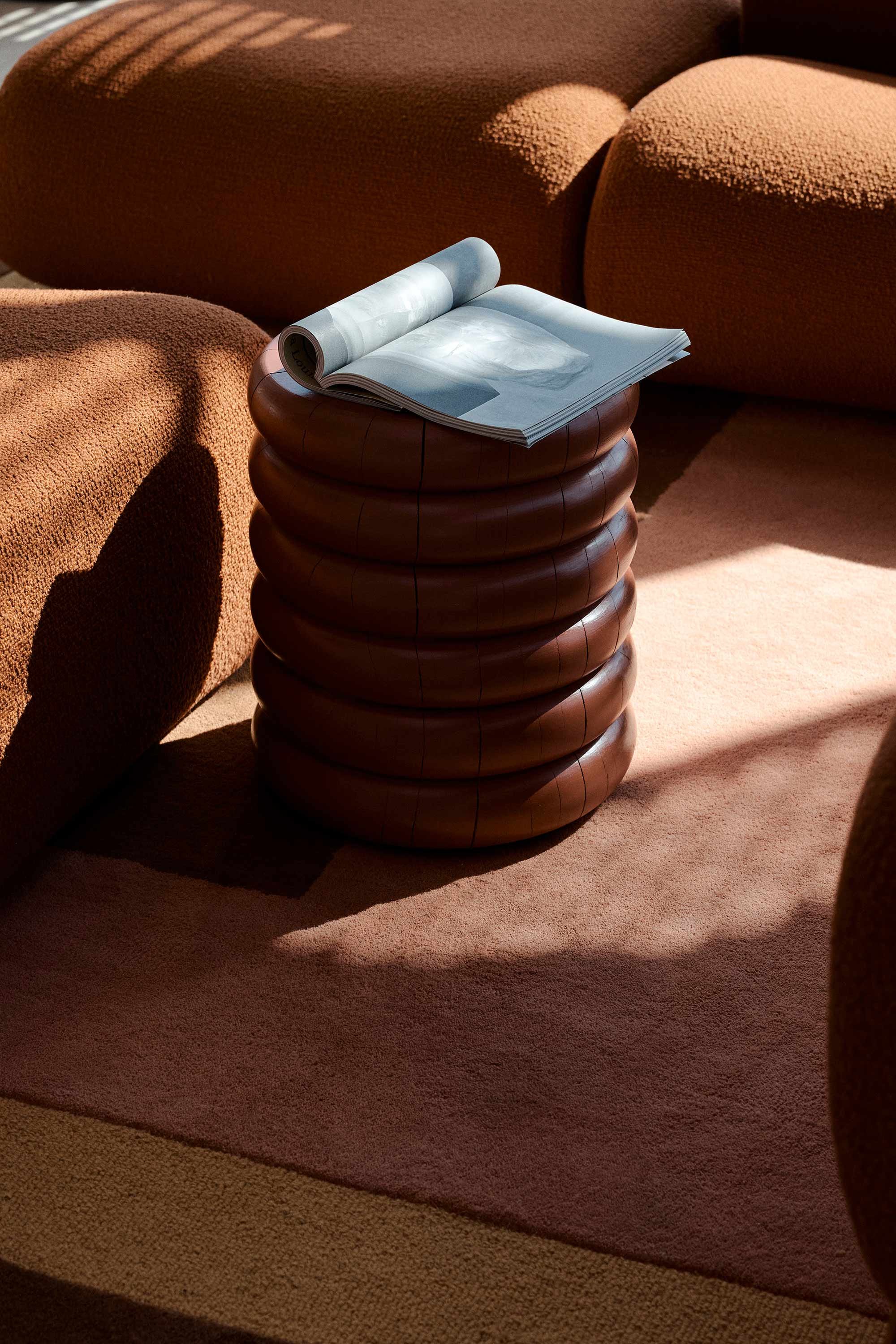Inside Melbourne Place: Melbourne’s New Design Hotel by Kennedy Nolan
Image by Anson Smart
Kennedy Nolan has crafted a cohesive vision in Melbourne Place, where colours, craft and urban context converge in the city’s latest hotel offering
When the hoarding finally came down around 130 Russell Street in Melbourne’s CBD, it revealed a structure that, though recently completed, appears to have been there all along, so effortlessly does it fit into its neighbourhood. The work of leading local architects Kennedy Nolan and executive general manager Tracy Atherton — whose career has spanned Hyatt, Aman Resorts and Jackalope Hotels — Melbourne Place is a new 14-storey hotel that celebrates the city’s history and reflects a distinctly Melburnian culture.
Responsible for both architecture and interiors, Kennedy Nolan was able to realise a comprehensive vision that starts at the brick and masonry exterior and continues all the way up to the corten brise-soleil cap, and all the way in, with swathes of jarrah wood a warm foil for the three-colour palette and Australian-designed pieces that fill every space.
In the lobby, a two-storey digital screen plays videos by six Australian artists on loop and stylised self-portraits by Melbourne-based, South Sudanese artist Atong Atem greet guests on each floor. And in the hotel’s 191 guestrooms, the clever palette comes into full effect, where tactility, texture and colour combine to create a space that invites and envelopes. ‘The colours were generated through an intense process with multiple criteria, such as compatibility with the building fabric of red brick and tinted concrete, being complementary to jarrah, which we chose for its uniquely Australian quality and its durability, and a curation of where the colour would be deployed to take advantage of specific light conditions and the function of the room,’ explains Patrick Kennedy of Kennedy Nolan.
Most of the rooms have a monochromatic palette that’s dependent on the aspect: west-facing rooms are golden-brown to intensify the light’s warm glow, east-facing rooms are cocoons of deep green, and north-facing rooms, most visible from the city, are a velvety blue. The furniture and decor is a tour of Australian design, with details handily listed out on the in-room companion for the design-minded guest. There are custom Jardan armchairs and sofas, lighting by Volker Haug, Ross Gardam and Henry Wilson, outdoor furniture from Coco Flip and Didier, chairs by Dowel Jones, a sofa by Adam Cornish and amenities by Aesop and Leif.
Image by Anson Smart
Image by Anson Smart
Befitting Melbourne's culinary reputation, the dining and drinking experiences are a highlight. Led by hatted chef Nick Deligiannis, rooftop all-day dining restaurant Mid-Air was also designed by Kennedy Nolan, its indoor-outdoor scheme a nod to Melbourne’s laneways and the photogenic portals in its facade already a recognisable sight. ‘The hotel brand was developed in Melbourne and by Melburnians. It’s independent and so allows locals and insiders who best understand the Melbourne market to call the shots,’ says Kennedy. ‘The design is specific to place. It’s not “global” except in the sense that Melbourne is a global city, and it’s not themed or predicated on design trends. The main driver was a hotel restaurant that felt part of the very fabric of the building rather than a fit-out layered over the top of a generic shell. Mid Air feels like an authentic place, and Melburnians have a nose for that.’
But it’s Ross and Sunny Lusted’s Marmelo that really does the lifting. The pair behind Sydney’s Woodcut make their Victorian debut with a fire-based menu influenced by the coastal cuisines of Portugal and Spain. The seafood-forward offering, considered wine menu and adept sommelier, and interiors by Mitchell & Eades make for a memorable meal, while basement bar Mr Mills — accessed via a statement chartreuse staircase — is a sultry late-night haunt. ‘What’s unique to them in Melbourne’s F&B landscape is the use of bold colour, pattern and texture and a nod to nostalgia,’ says director Samantha Eades. ‘Who does a chartreuse stairwell in Melbourne? No one!’
And crucially, rather than catering exclusively to tourists, these three establishments are weaving themselves into Melbourne’s social fabric. Evidenced by their consistently filled reservation books, they’ve achieved the delicate feat of appealing equally to Melbourne's residents and its steady stream of visitors.
Text by Simone Schultz
Image by Sean Fennessy
Image by Sean Fennessy
Image by Sean Fennessy
Image by Sean Fennessy
Image by Sean Fennessy
Image by Sean Fennessy
Image by Anson Smart
Image by Anson Smart
Image by Anson Smart
Image by Anson Smart
Image by Anson Smart
Image by Anson Smart
Image by Anson Smart
Image by Anson Smart
Image by Anson Smart
Image by Anson Smart
Image by Anson Smart
Image by Kristoffer Paulsen
Image by Kristoffer Paulsen
Image Courtesy of Melbourne Place
Image by Derek Swalwell
























